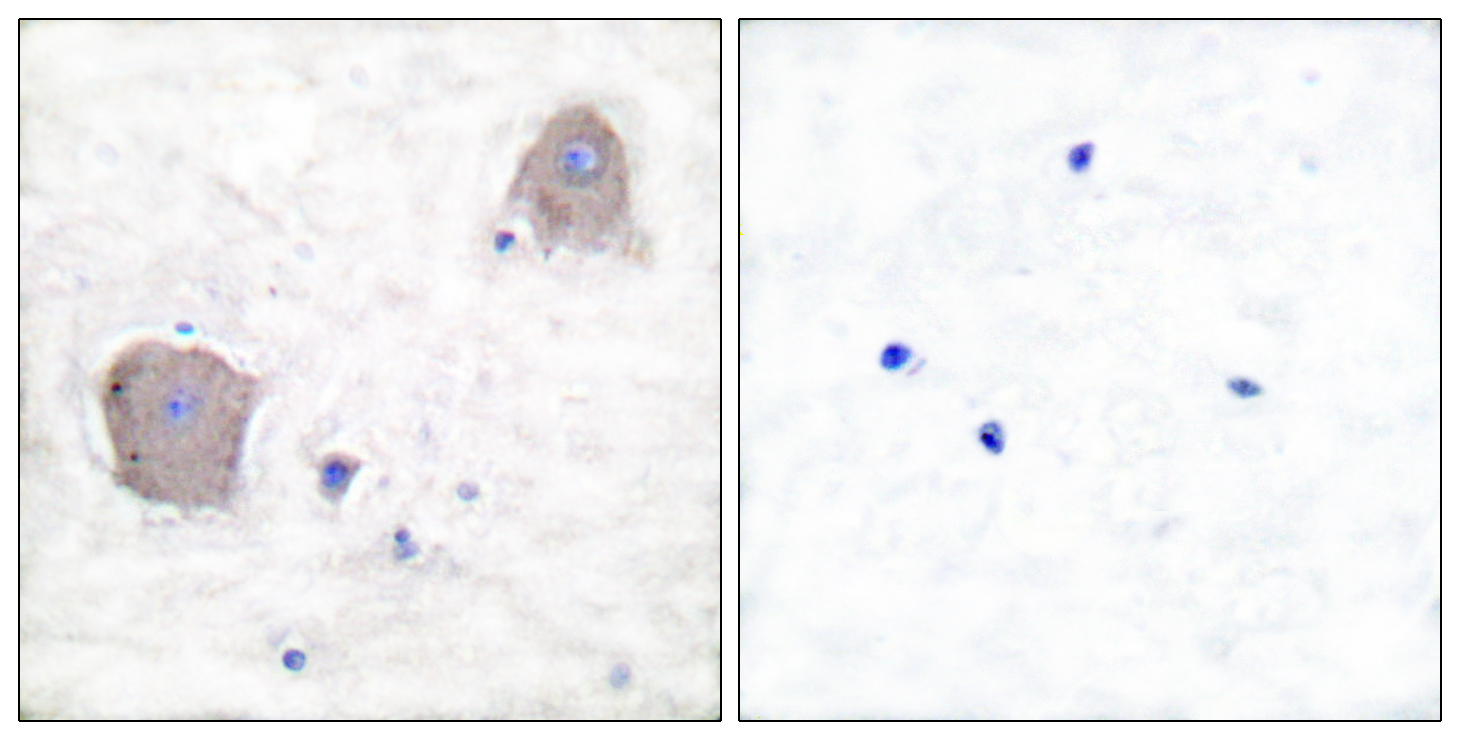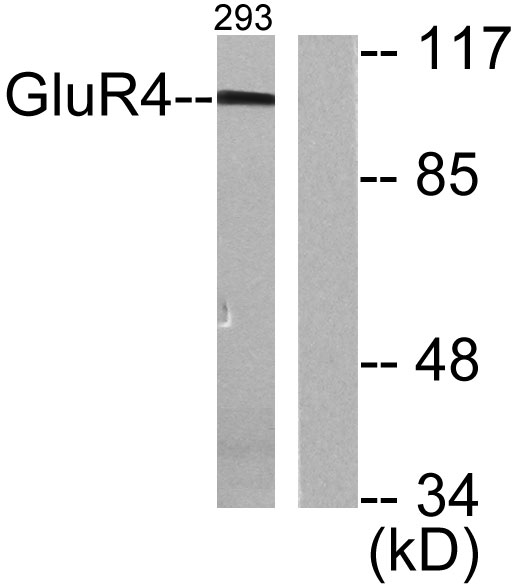mGluR-4 Polyclonal Antibody
- Catalog No.:YT2744
- Applications:WB;IHC;IF;ELISA
- Reactivity:Human;Mouse;Rat
- Target:
- mGluR-4
- Fields:
- >>Phospholipase D signaling pathway;>>Neuroactive ligand-receptor interaction;>>Glutamatergic synapse;>>Taste transduction
- Gene Name:
- GRM4
- Protein Name:
- Metabotropic glutamate receptor 4
- Human Gene Id:
- 2914
- Human Swiss Prot No:
- Q14833
- Mouse Gene Id:
- 268934
- Mouse Swiss Prot No:
- Q68EF4
- Rat Gene Id:
- 24417
- Rat Swiss Prot No:
- P31423
- Immunogen:
- The antiserum was produced against synthesized peptide derived from human mGluR4. AA range:851-900
- Specificity:
- mGluR-4 Polyclonal Antibody detects endogenous levels of mGluR-4 protein.
- Formulation:
- Liquid in PBS containing 50% glycerol, 0.5% BSA and 0.02% sodium azide.
- Source:
- Polyclonal, Rabbit,IgG
- Dilution:
- WB 1:500 - 1:2000. IHC 1:100 - 1:300. ELISA: 1:10000.. IF 1:50-200
- Purification:
- The antibody was affinity-purified from rabbit antiserum by affinity-chromatography using epitope-specific immunogen.
- Concentration:
- 1 mg/ml
- Storage Stability:
- -15°C to -25°C/1 year(Do not lower than -25°C)
- Other Name:
- GRM4;GPRC1D;MGLUR4;Metabotropic glutamate receptor 4;mGluR4
- Observed Band(KD):
- 100kD
- Background:
- glutamate metabotropic receptor 4(GRM4) Homo sapiens L-glutamate is the major excitatory neurotransmitter in the central nervous system and activates both ionotropic and metabotropic glutamate receptors. Glutamatergic neurotransmission is involved in most aspects of normal brain function and can be perturbed in many neuropathologic conditions. The metabotropic glutamate receptors are a family of G protein-coupled receptors, that have been divided into 3 groups on the basis of sequence homology, putative signal transduction mechanisms, and pharmacologic properties. Group I includes GRM1 and GRM5 and these receptors have been shown to activate phospholipase C. Group II includes GRM2 and GRM3 while Group III includes GRM4, GRM6, GRM7 and GRM8. Group II and III receptors are linked to the inhibition of the cyclic AMP cascade but differ in their agonist selectivities. Several transcript variants encoding different isoforms have been found for this
- Function:
- function:Receptor for glutamate. The activity of this receptor is mediated by a G-protein that inhibits adenylate cyclase activity.,similarity:Belongs to the G-protein coupled receptor 3 family.,subunit:Interacts with PICK1.,tissue specificity:Strongly expressed in the cerebellum. Expressed at low levels in hippocampus, hypothalamus and thalamus. No expression detected in liver.,
- Subcellular Location:
- Cell membrane ; Multi-pass membrane protein .
- Expression:
- Strongly expressed in the cerebellum. Expressed at low levels in hippocampus, hypothalamus and thalamus. No expression detected in liver.
- June 19-2018
- WESTERN IMMUNOBLOTTING PROTOCOL
- June 19-2018
- IMMUNOHISTOCHEMISTRY-PARAFFIN PROTOCOL
- June 19-2018
- IMMUNOFLUORESCENCE PROTOCOL
- September 08-2020
- FLOW-CYTOMEYRT-PROTOCOL
- May 20-2022
- Cell-Based ELISA│解您多样本WB检测之困扰
- July 13-2018
- CELL-BASED-ELISA-PROTOCOL-FOR-ACETYL-PROTEIN
- July 13-2018
- CELL-BASED-ELISA-PROTOCOL-FOR-PHOSPHO-PROTEIN
- July 13-2018
- Antibody-FAQs
- Products Images

- Western Blot analysis of various cells using mGluR-4 Polyclonal Antibody diluted at 1:500
.jpg)
- Western Blot analysis of 293 cells using mGluR-4 Polyclonal Antibody diluted at 1:500

- Immunohistochemistry analysis of paraffin-embedded human brain tissue, using mGluR4 Antibody. The picture on the right is blocked with the synthesized peptide.

- Western blot analysis of lysates from 293 cells, treated with Forskolin 40nM 30', using mGluR4 Antibody. The lane on the right is blocked with the synthesized peptide.



